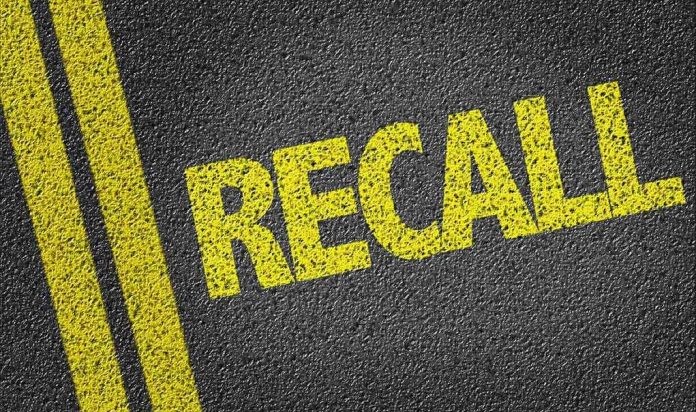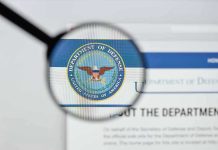
When nearly 625,000 vehicles from one of America’s most iconic automakers are suddenly swept into a recall for seat belts and camera failures, every driver—and every industry leader—has to wonder: just how safe is the road ahead?
Story Snapshot
- Ford recalls nearly 625,000 Mustangs and F-Series Super Duty trucks for critical seat belt and camera defects
- NHTSA investigations and consumer complaints drove the recall, spotlighting ongoing safety scrutiny
- The recall’s scale, spanning sports cars and workhorse pickups, reveals systemic quality challenges
- Ford’s response, regulatory oversight, and owner impact will shape trust and industry standards
Ford’s Safety Recall: A Wake-Up Call for the Road
Ford Motor Company’s October 2025 recall of nearly 625,000 United States vehicles didn’t just disrupt plans for Mustang owners or F-Series Super Duty drivers—it forced the nation to confront the fragility of trust in modern automotive safety. The recall came after U.S. safety regulators, spurred by a surge of consumer complaints and service records, pinpointed two high-risk failures: seat belt pretensioner cables in Mustangs and malfunctioning rearview cameras in the country’s best-selling trucks. The investigation, led by the National Highway Traffic Safety Administration, was not the first of its kind—but the breadth and dual nature of the defects set this episode apart from routine manufacturer recalls.
This mass recall is no mere paperwork shuffle. It is a logistical and reputational gauntlet that Ford, already grappling with a record pace of recalls in recent years, must navigate under the full glare of public and regulatory scrutiny. Owners of the affected vehicles—spanning raucous Mustangs and the workhorse F-Series Super Duty—are now caught in the crosshairs, facing sudden uncertainty about the reliability of core safety systems they have always taken for granted. For Ford, the stakes are existential: how the company confronts this moment, and how swiftly it can put real fixes into the hands of drivers, will define its reputation for years to come.
What Went Wrong: The Anatomy of a Recall
Two distinct but equally alarming flaws triggered this recall. Ford Mustangs faced defective seat belt pretensioner cables—a critical failure in the very system that protects drivers in a crash. At the same time, multiple F-Series Super Duty models suffered from rearview camera displays that could blank out, threatening safety during reversing or parking. These are not minor nuisances; they are failures in first-line safety defenses. The NHTSA’s intervention came after patterns of malfunction emerged from dealership service logs and direct consumer reports, prompting a formal investigation that left Ford with little room to maneuver but to act decisively.
Ford’s official recall process began less than a day after the NHTSA’s announcement. By October 19, 2025, the company had initiated outreach to owners and dealerships, outlining procedures for inspection, repair, and replacement—at Ford’s expense. The automaker’s public statements have emphasized compliance and accountability, yet the recall’s unprecedented scale and the nature of the defects underscore deeper questions about quality assurance in an era when vehicles are more complex than ever.
The Broader Impact: Safety, Scrutiny, and Industry Lessons
For affected owners, the recall is a jolt—a forced visit to dealerships, uncertainty about daily transportation, and a sense of betrayal by a household brand. Dealerships and service centers now confront a surge in service demand, straining resources and customer patience. Ford, meanwhile, faces not just the cost of repairs but the longer-term challenge of restoring faith among drivers and investors alike. Regulatory scrutiny will only intensify: NHTSA’s proactive stance sends a clear warning to every automaker that lapses in safety, regardless of scale, will be met with swift action.
Ford recalls nearly 625K US vehicles over faulty seat belts, camera displays https://t.co/KDFpHm3yIY pic.twitter.com/Q6izarWFFg
— New York Post (@nypost) October 17, 2025
Industry observers see this recall as a case study in both the promise and peril of modern automotive engineering. Advanced electronics and safety systems have made vehicles safer, but they also introduce new vectors for failure—ones that can elude traditional quality controls until flaws emerge in the real world. Experts argue that robust pre-market testing and continuous post-sale monitoring are now non-negotiable, not just for Ford but for all manufacturers aiming to stay ahead of regulatory and consumer expectations.
Looking Forward: Trust, Accountability, and the Road Ahead
The Ford recall’s ultimate legacy will depend on the speed and transparency of the response. Owners expect rapid, no-hassle repairs and clear communication. Regulators demand full compliance and ongoing vigilance. For Ford, this is a defining stress test—a moment to demonstrate that safety and reliability are not just marketing slogans but non-negotiable commitments. The broader industry, watching closely, faces its own reckoning: as vehicles grow smarter and more interconnected, the margin for error shrinks, and the consequences of failure only grow.
This episode is more than a cautionary tale; it is a clarion call for the future of automotive safety, urging every stakeholder to double down on quality, oversight, and above all, the sacred trust of the American driver.
Sources:
Autoblog: Ford recalls nearly 625,000 Mustang, F-Series pickups over cameras, seatbelts
PhillyBurbs: Ford recalls Mustangs and Super Duty trucks
LossExecutives: Ford recalling 625k US vehicles over camera display, seatbelt issues













